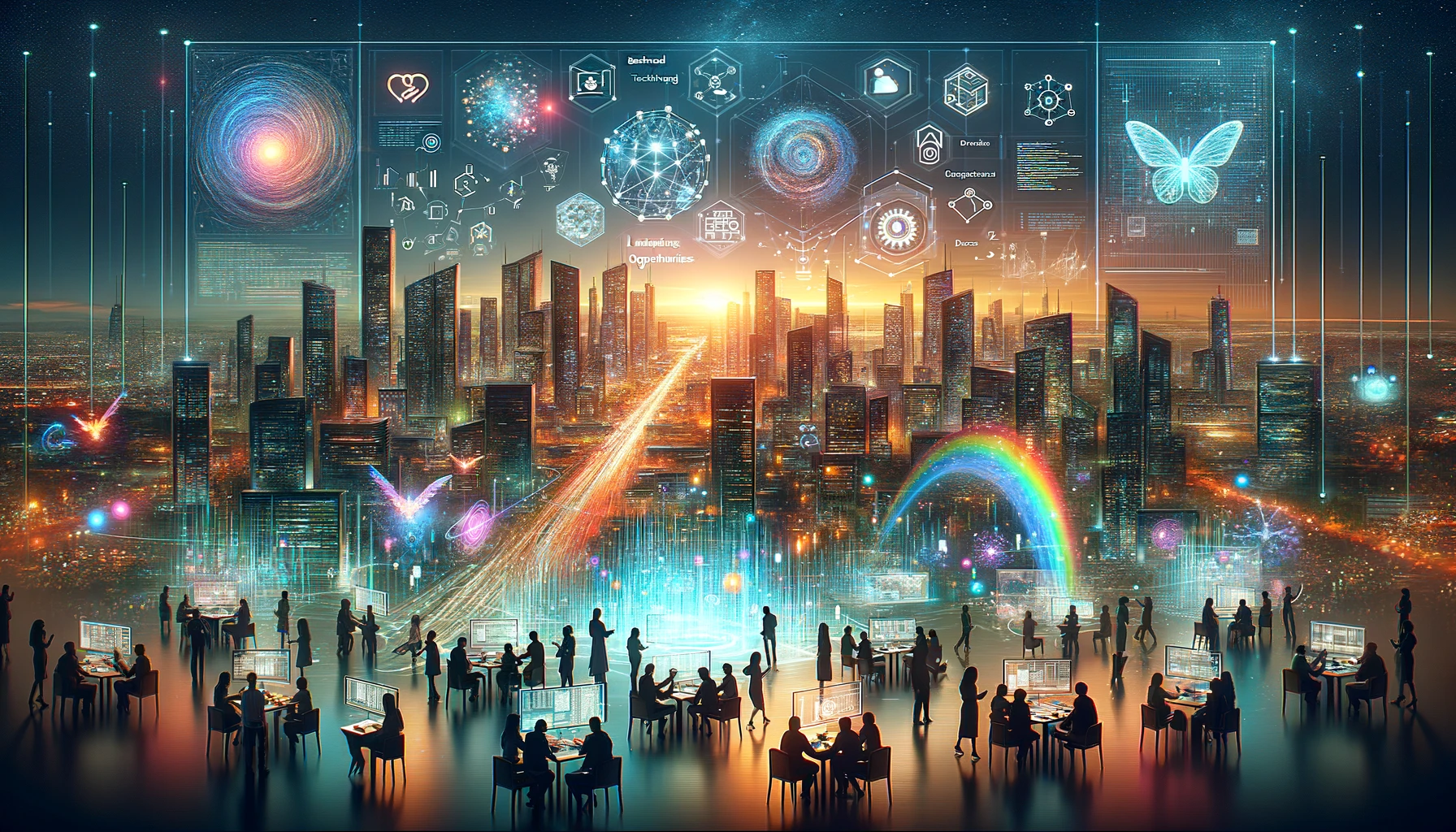Key Points
1. Sora is a text-to-video generative AI model released by OpenAI, capable of generating high-quality videos of realistic or imaginative scenes from text prompts, simulating physical and digital worlds effectively, simulating environments like Minecraft, and improving creativity and productivity.
2. The technology behind Sora involves a diffusion transformer model for text-to-video generation, utilizing a video compression network, spatial-temporal latent patches, and leveraging vision transformers for image and video diffusion.
3. Sora's capabilities have profound implications, including improving simulation abilities, boosting creativity, driving educational innovations, enhancing accessibility, and fostering emerging applications in various domains such as film-making, education, gaming, healthcare, and robotics.
4. There are opportunities for Sora in video generation models, but limitations include challenges in accurately depicting complex actions or capturing subtle facial expressions, ethical considerations, and ensuring safe and unbiased video generation.
5. The history of generative AI in the vision domain has evolved from traditional image generation techniques to the development of generative adversarial networks (GANs), variational autoencoders (VAEs), flow models, and diffusion models, leading to novel advances in vision models.
6. The scaling laws for large language models (LLMs) have prompted the exploration of similar scaling principles for large vision models (LVMs) like Sora, pointing towards potential emergent abilities and advancements in the vision domain.
7. Sora employs instruction following to ensure accurate interpretation and execution of complex human instructions for video generation, similar to approaches used in text-to-image models like DALL-E 3.
8. Prompt engineering is crucial for guiding Sora in text-to-video generation, involving the crafting of detailed descriptions, visual anchors, and video prompts to direct the model to produce accurate and optimized outputs.
9. Trustworthiness and ethical considerations are critical for the deployment of models like Sora, addressing safety concerns, potential misuse, biases, privacy preservation, and the need for model alignment to ensure consistent and ethical behavior. This necessitates interdisciplinary collaboration and the development of new technologies and methods to identify and filter harmful content generated by these models.
Summary
The paper provides a comprehensive review of Sora, a text-to-video generative AI model released by OpenAI. It traces the development of Sora and investigates its underlying technologies, applications, limitations, and future directions. The model is trained to generate videos of realistic or imaginative scenes from text prompts, showing potential in simulating the physical world. Sora's underlying technology is a pre-trained diffusion transformer, enabling it to process diverse visual inputs and transform them into a unified representation for training large-scale generative models.
The paper also discusses applications of Sora across various industries such as filmmaking, education, gaming, healthcare, and robotics, highlighting its potential in improving simulation abilities, boosting creativity, driving educational innovations, enhancing accessibility, and fostering emerging applications. Additionally, the paper addresses the limitations and challenges of Sora, including safety concerns, potential misuse, ethical considerations, as well as the need for interdisciplinary collaboration to ensure the safety and reliability of such models. The analysis also investigates the model's trustworthiness, fairness, privacy preservation, and alignment with human expectations and ethical standards.
Overall, the paper offers insights into the advanced capabilities and potential impact of Sora, signifying a transformative shift in video generation technology.
Reference: https://arxiv.org/abs/2402.171...
